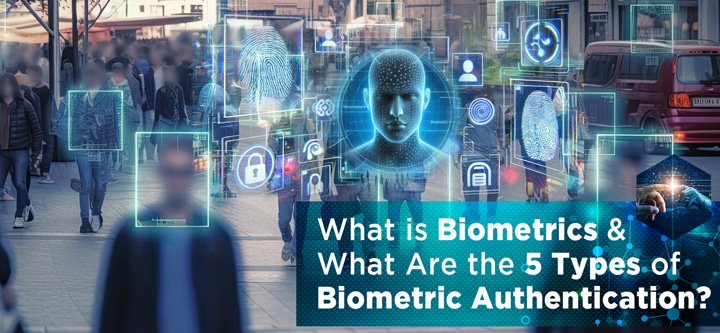Biometrics refers to the measurement and statistical analysis of people’s unique physical and behavioral characteristics. It is used primarily for identification and access control, and the concept is gaining prominence due to its security and efficiency advantages. Biometrics harnesses the uniqueness of an individual’s biological traits, which are extremely difficult to replicate or forge.
This article delves into the concept of biometrics, its significance, and explores the five primary types of biometric authentication.
Understanding Biometrics:
Biometrics refers to the measurement and statistical analysis of people’s unique physical and behavioral characteristics. The technology is primarily used for identification and access control, or for identifying individuals who are under surveillance. Biometric systems work by comparing a captured biometric sample with a stored template in the database. The process involves three main stages: enrollment, storage, and comparison.
Why Biometrics Matter:
In an era where cyber threats are ever-evolving, traditional authentication methods like passwords and PINs are no longer sufficient. Biometrics offers a higher level of security as these traits are difficult to forge or steal.
According to the latest research study, the demand of global Contactless Biometrics Technology Market size & share was valued at approximately USD 14.1 Billion in 2023 and is expected to reach USD 15.5 Billion in 2024 and is expected to reach a value of around USD 47.6 Billion by 2033*, at a compound annual growth rate (CAGR) of about 17.7% during the forecast period 2024 to 2033.”
This growth is driven by the increasing adoption of biometric systems in various sectors, including banking, healthcare, and government.
1. Fingerprint Recognition:
Fingerprint recognition is the most widely used biometric technology. It involves scanning the unique patterns of ridges and valleys on a person’s finger. This method is highly reliable and cost-effective. With the advent of mobile banking and online transactions, fingerprint scanners have become ubiquitous in smartphones, enhancing both security and user convenience.
2. Facial Recognition:
Facial recognition technology analyzes the unique features of a person’s face. It is commonly used in security systems, and its application has expanded to various domains such as unlocking smartphones, social media tagging, and airport security. Despite concerns over privacy, facial recognition remains a popular choice due to its non-intrusive nature and increasing accuracy.
3. Iris Recognition:
Iris recognition involves scanning the unique patterns in the colored ring of a person’s eye. This method is highly accurate and is often used in high-security environments. According to a report by Mordor Intelligence, the iris recognition market is expected to grow from USD 4.05 billion in 2023 to USD 10.47 billion by 2029, highlighting its increasing adoption in various sectors.
4. Voice Recognition:
Voice recognition analyzes the unique characteristics of a person’s voice, including pitch, tone, and rhythm. This biometric method is gaining traction in the banking sector for customer verification during phone banking. The global voice recognition market is expected to grow from $9.74 billion in 2023 to $34.26 billion by 2033, with a CAGR of 14.87%.
5. Behavioral Biometrics:
Behavioral biometrics involves analyzing patterns in human activities, such as typing rhythm, walking gait, and mouse movements. This type of biometrics is particularly useful in continuous authentication systems, providing ongoing verification of a user’s identity. It adds an extra layer of security, making it harder for cybercriminals to impersonate legitimate users.
Evolute Fintech Innovations and Biometrics
At Evolute Fintech Innovations, we leverage cutting-edge biometric technology to enhance the security and convenience of our fintech products. Our range of microATMs, like Leopard and other payment terminals, are equipped with advanced biometric authentication features, ensuring secure and seamless transactions for our users.
For instance, our Leopard® microATM integrates fingerprint and iris scanners, bringing banking services to the doorstep of customers with unparalleled security.
Biometric authentication is revolutionizing the way we secure our digital lives. By harnessing the unique characteristics of individuals, biometric systems provide a level of security that is difficult to replicate. As we continue to advance technologically, the integration of biometrics in various sectors will only grow, offering enhanced security and convenience.
At Evolute Fintech Innovations, we are committed to staying at the forefront of this revolution, providing our customers with state-of-the-art biometric solutions. By understanding and adopting biometric technologies, we can pave the way for a safer, more secure digital future.
As Bill Gates once said, “Security is, I would say, our top priority because for all the exciting things you will be able to do with computers—organizing your lives, staying in touch with people, being creative—if we don’t solve these security problems, then people will hold back.





